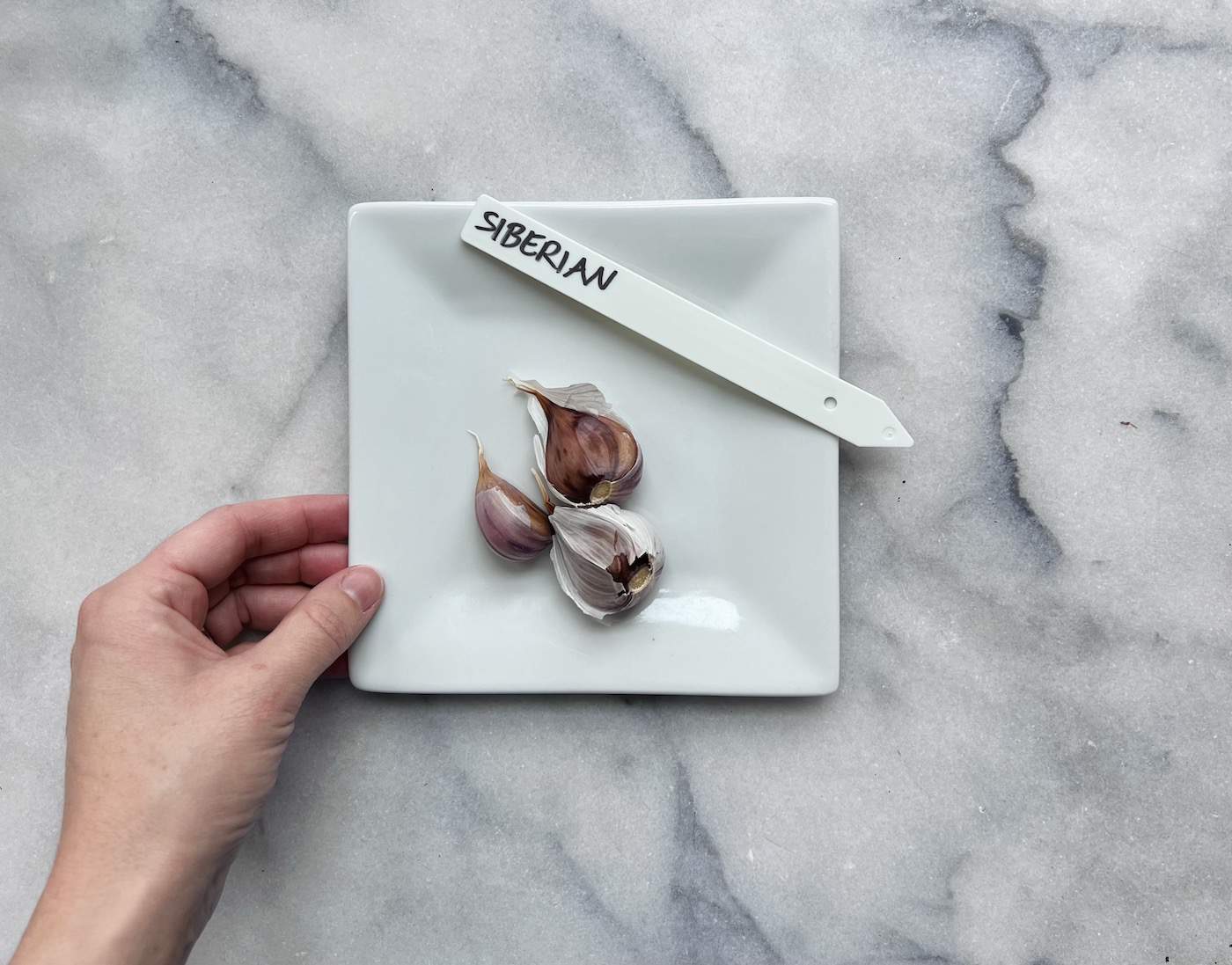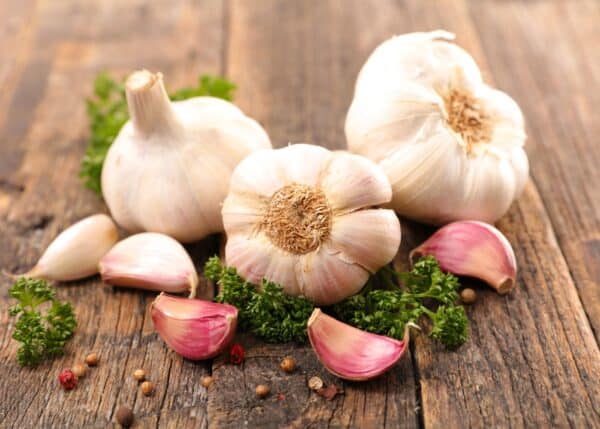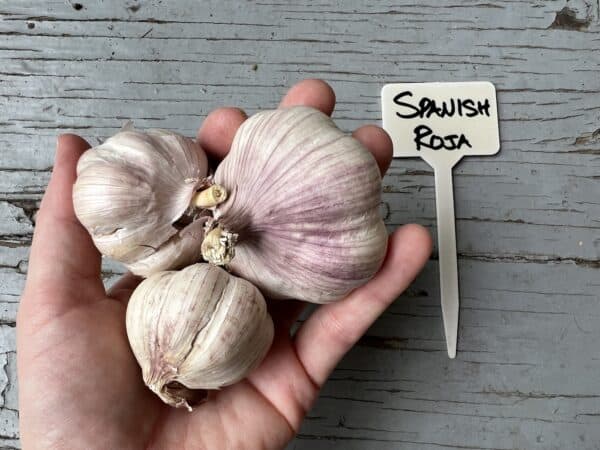Siberian garlic is a hardneck, marbled purple stripe variety that thrives in both cold and warm climates. It has a medium-to-strong raw flavor that turns mild and creamy when cooked. This garlic is ideal for a range of dishes, from stir-fries to soups, and also has a long shelf-life of 6-7 months due to its tight clove skins.
Introduction to Siberian garlic
Siberian garlic is a marbled purple stripe hardneck variety known for its adaptability to both cold and warm climates. Originating in Europe and traditionally used in Eastern European and Russian cuisines, this garlic variety made its way to Alaska in the 19th century.
With a medium-to-strong flavor that becomes mild and creamy when cooked, it is a versatile culinary ingredient ideal for light stir-fries, dips, sauces, and soups. Its tight clove skins contribute to its long storability, usually lasting 6-7 months, making it a dependable choice for kitchens year-round.
When it comes to growing conditions, Siberian garlic performs well in cooler climates and requires a cold spell (vernalization) for optimal bulb growth. The plant usually features 5-9 plump cloves per large bulb, enclosed in an attractive light red skin. Although the plant leaves may show yellow tips after hard spring frosts, this does not impact its overall vigor.

Flavor profile of Siberian garlic
Siberian garlic brings a milder, creamier taste to the table when compared to the popular varieties of garlic to grow. It’s perfect for those who prefer a subtler garlic flavor. It excels in light stir-fries, dips, and sauces, providing a delicate garlic touch that complements rather than overwhelms other flavors.
It can be a bit bland when roasted, but it’s perfect for those who don’t love a strong garlic taste. The taste can also be a bit sweeter than some other mild options.

Growing Siberian garlic at home
Growing Siberian garlic in a home garden is a straightforward process that rewards gardeners with a richly flavored crop. Being a hardneck variety, it prefers cooler climates, but it is versatile enough to adapt to warmer environments as well.
Start by planting individual cloves, pointy side up, in well-drained, fertile soil during the fall, about 4-6 weeks before the ground freezes. Place the cloves about 4-6 inches apart and 2-3 inches deep.
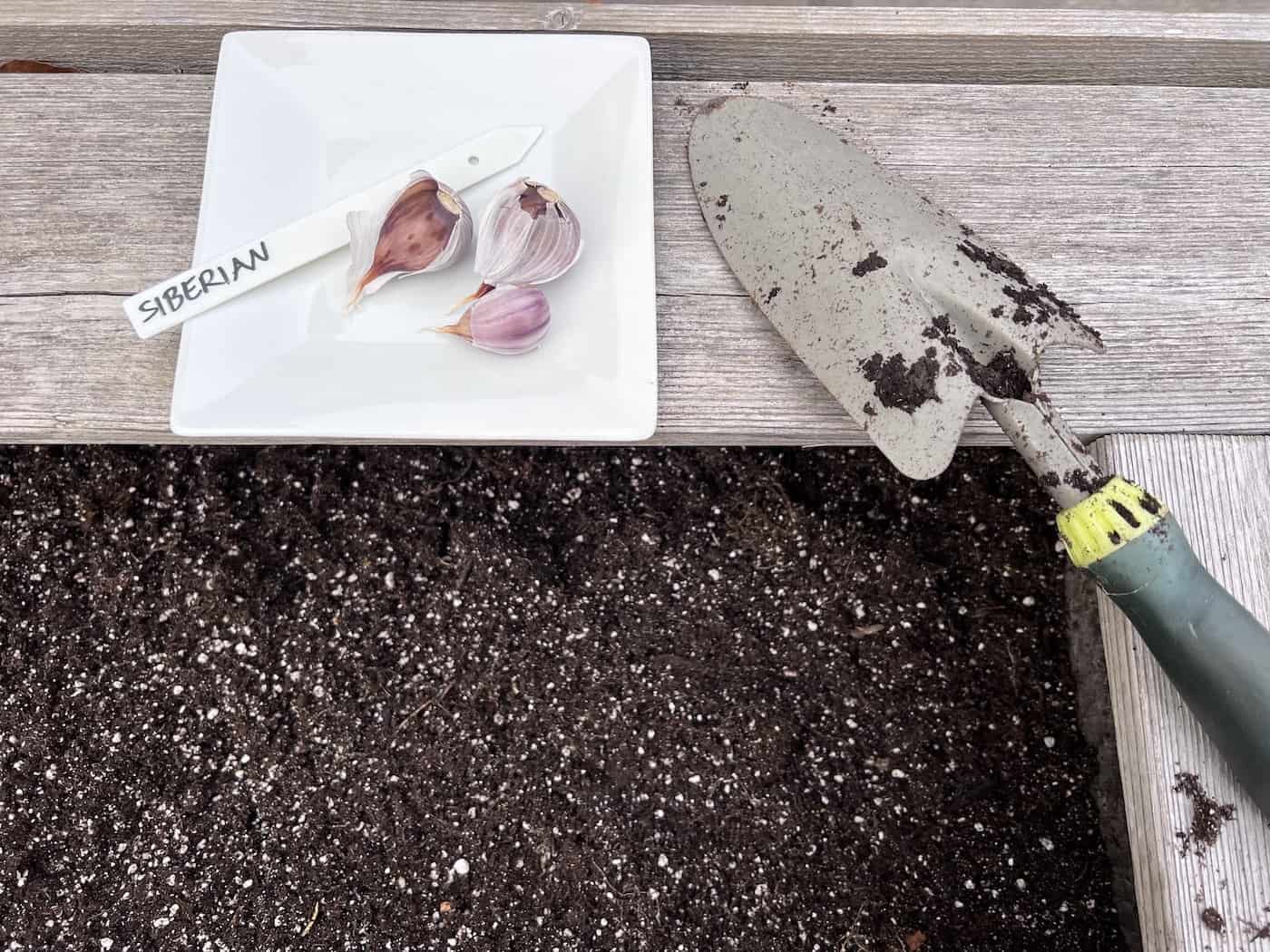
Siberian garlic benefits from vernalization, meaning it needs a cold spell to produce larger bulbs, so if you’re in a warmer zone, you might want to artificially chill the cloves in a refrigerator for a few weeks before planting. In colder zones, the cloves will stay dormant when the ground is frozen and be off to a quick start in the spring as the ground thaws.
Water your garlic plants moderately, keeping the soil consistently moist but not waterlogged. I use raised beds to grow my garlic, which can work especially well if your in-ground soil is heavy clay that tends to pool with water during spring rains.
Siberian garlic has slender stems, but don’t be fooled: larger bulbs are hidden beneath. The plant may develop yellow leaf tips after hard spring frosts, but this usually doesn’t affect the plant in the end.

When the leaves start to turn brown and die off in late spring or early summer, that’s your cue to harvest. After harvesting, allow the bulbs to cure in a dry, well-ventilated area for a few weeks. This will prepare them for storage in a cool, dry area for the winter, with this variety typically lasting up to 6-7 months.
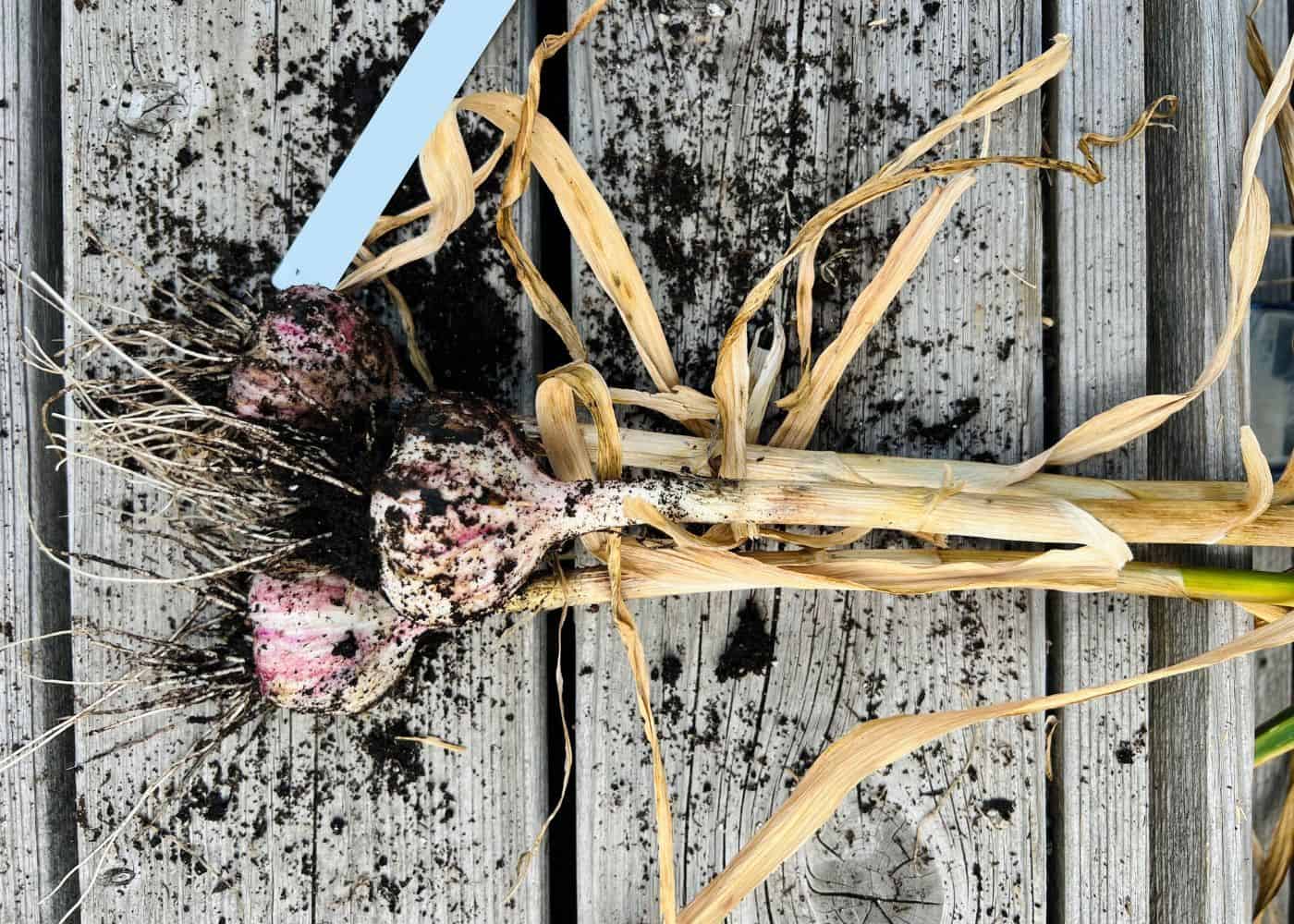
Using Siberian garlic in cooking
Siberian garlic is a versatile ingredient that brings a range of flavors to the culinary table. When cooked, its taste turns mild and creamy, making it an excellent choice for recipes that call for a subtle garlic flavor.
It caramelizes beautifully when roasted, adding a delicate, rich taste to the dish. This quality makes it perfect for lighter stir-fries, creamy dips, sauces, or soups where a touch of garlic is welcome but shouldn’t dominate. The garlic’s creamy texture when cooked also means it blends well into mashed potatoes, risotto, or as a subtle note in salad dressings.

However, if you’re after a kick of pungency, Siberian garlic won’t disappoint when used raw. Despite its mild-mannered nature when cooked, it packs a punch when consumed in its raw form. This is ideal for recipes with a more robust garlic flavor, like homemade salsas, bruschettas, or garlic-infused oils.
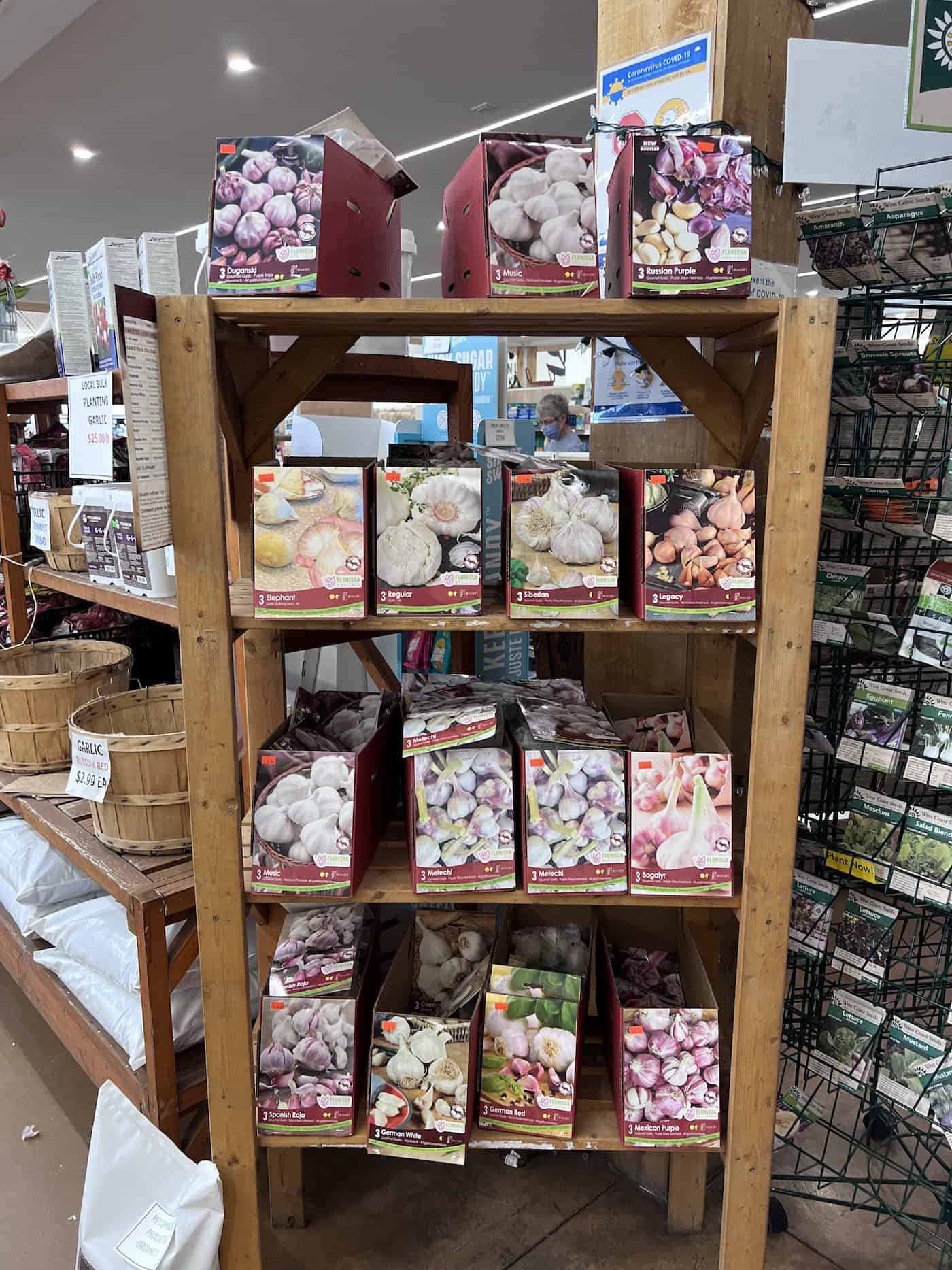
More about the marbled purple stripe subgroup of garlic varieties
Marbled purple stripe garlics are a subgroup of hardneck garlic varieties characterized by their distinctive marbled or streaked purple appearance on the bulb wrappers. This category of garlic is known for their robust flavors, which can range from medium to strong, and are often described as rich and complex.
Their cloves are usually protected by tighter skins, which not only contribute to their attractive appearance but also help extend their storage life. Typically, you can expect to store marbled purple stripe garlics for about 6-10 months under proper conditions.
These garlic varieties perform exceptionally well in colder climates, often requiring a cold spell, or vernalization, to grow larger bulbs. However, many types are also adaptable to milder climates, making them versatile for different growing conditions. The plants usually have medium to tall, slender stems, and the bulbs generally contain between 5-9 plump cloves.


